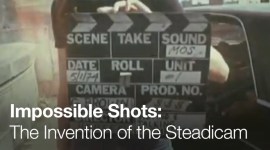Royalty Free Music – Licensing & Copyright
Premiumbeat.com attorney, Patrick Curley, an entertainment lawyer specialized in the Music Industry reviews the basics of Copyright and Music Licensing.
At Premiumbeat.com, our business is selling licenses to use music in multimedia and traditional media productions. By providing royalty free music we make this process exceptionally easy for our clients.
Nonetheless, it’s important to understand what copyright means, how it applies to music, and how clients can obtain the rights to use one of our songs, or any other song for that matter. Terms such as “royalty-free music”, “stock music”, and “synchronization licensing”, get tossed around loosely, and this adds to the confusion. Hopefully this mini-tutorial will shed some light on this.
A TALE OF TWO COPYRIGHTS: COMPOSITION AND MASTER
Copyright is intellectual property. If you own the copyright to something, it means, quite simply, that you have the right to decide who can make a copy. Copyright is the right to copy. Obviously it’s more complex than that but we’ll keep it basic for now.
In terms of music, the key thing to understand is that each recording of music actually includes two distinct copyrights:
1. The copyright in the song itself, or the musical composition, or simply the Composition. This means the rights in the words and music of a song, and is often referred to as the ‘Publishing’ rights. Think of an old-school songwriter sitting at a piano, writing music and lyrics to a song. That song exists before it is recorded. Often musicians (especially in electronic music and hip hop) have a hard time grasping this distinction because they write music while they are producing it – sitting at their computer. Copyright is formed when you write a song, by virtue of the fact that it is new and original and takes a graphic form, such as writing down the lyrics or doing a demo. The copyright in this Composition is owned by whoever wrote it, until they assign or sell those rights to a Music Publishing company. There is no legal requirement to register a copyright with the copyright office in your country, and registration does not create the copyright, but it does serve as evidence of its creation. This can be an important tool in copyright infringement cases.
2. The copyright in a sound recording, also known as the Master. The Master is a recording of a Composition, so in a sense the copyright to the Composition is embedded within the Master. The copyright to the Master is owned by whoever produced it. Often this is a record company. To illustrate this, think of a famous song such as “Georgia on my Mind”. Each record company that produces a version of that song owns their recording, but the fundamental rights to the composition remain with the original publisher, who owns the Composition – the copyright of the song itself.
MUSIC PUBLISHERS AND RECORD LABELS
The business of a record label is basically to generate money with the Recordings. The basic business model historically has been to manufacture products (vinyl records, CDs) and sell them in stores. It’s a manufacturing business, essentially the same as selling widgets.
Music publishers generate money with songs. For the most part, this is a rights administration business. The music publisher controls the copyright in a song, and that entitles it to revenue when the song is used. Here are the main sources of revenue for music publishing:
1. Public Performance Royalties. These royalties are paid by anyone who ‘publicly broadcasts’ music, for instance on radio and television stations, live performance venues, retail outlets and yes, even elevators. In Canada, this is administered by SOCAN. In the US, there are ASCAP, BMI and SESAC. Most other territories have a similar organization – referred to as a PRO or Performing Rights Organization. Keep in mind that the royalties are paid by the broadcasters, not by the producers of a program such as a TV show. The broadcasters have to pay a certain percentage of their annual ad revenue to the PRO for a license to use all music. The PROs then pay the composers and publishers for the songs that were broadcast.
2. Mechanical Royalties (also called mass duplication royalties). These royalties are basically the publisher’s cut for CD or DVD sales. Since a Master Recording is a reproduction of a Composition (the Composition is embedded within it), the record company has to pay for the right to do this. The rate for CD duplication is set by negotiations between associations representing the labels and publishers (in Canada), and by the copyright board in the US. This is why the mechanical rate is often referred to as the “Statutory Rate”. The same principle applies to DVDs, except that the price is negotiated on a case-by-case basis.
3. Synchronization. This is where a publisher allows someone to ‘synchronize’ music with images. This can be for many different purposes: film, TV, advertising, video games, multimedia, websites, or corporate uses (we’ll refer to all these as “Productions”). The idea is that the producer of a TV show, for example, pays to synchronize a song with some sort of a scene. Fees are negotiated on a case-by-case basis. From the publisher’s point of view, it’s an attractive proposition because you get a fee up front ( the “Sync Fee”), and you also get public performance royalties when the show plays on TV (see # 1 above).
SYNCHRONIZATION AND MASTER USE LICENSES
Another thing to understand is that since there are two copyrights involved, two licenses need to be issued to make use of a recorded song:
1. Synchronization License: gives you the right to ‘sync’ the Composition with images in your production, as described above.
2. Master Use License: This is exactly the same rights as the sync license, except it applies to the Master, the sound recording itself – the actual recorded interpretation of the musical composition.
Since the publisher owns the Composition (sync license) and the record company owns the Master, two different negotiations often have to take place, with two different contracts, for a song to be used in a Production. This can lead to complicated and time-consuming negotiations.
If a single company owns or controls the rights to both the Master and the Composition, this is called a One-Stop-Shop. This means that the company can sign both the Sync license and the Master Use license, which is less complicated and more attractive from the point of view of a film or TV producer – or anyone who needs production music.
Premiumbeat.com is such a One-Stop-Shop since it controls both the Master and the Compositions of all the music on its website.
MUSIC LICENSING DEFINITIONS
ROYALTY FREE: Purchasing royalty free music means that once you have paid the one-time fee, you can use that music as many times as you want for as long as you want without ever having to pay additional money to the licensor. There are many applications for which music must be licensed, and the traditional payment structure (in which a royalty is charged for each usage) is cumbersome and costly. Royalty-free music libraries solve this problem by offering music that can be purchased for a one-time fee and then be used by the purchaser as many times as needed.
For example: If a piece of royalty-free music is purchased to be used on a website, it does not matter if one visitor or 100,000 visitors come to the webpage – the purchase fee is exactly the same. Another example: If a piece of royalty-free music is purchased for use on a TV show, there is only the one-time fee, it doesn’t matter if the show is presented 5 times or 1,000 times. The TV show producer will never have to pay any additional fee for the music. This saves time and considerable expense.
Royalty free music does not mean that anyone gives up their copyrights or their rights to administer a song. For instance, if we license a song to you for a film project which goes on TV and then DVD, we can still collect public performance royalties for the TV performance since these are paid by the broadcaster, not by you. You only acquire the right to use the song in your production. The music is offered on a royalty free basis but is not copyright free. The music composer and the publisher remain the copyright owners.
STOCK MUSIC: Stock music is music that is produced for the specific purpose of licensing at fairly affordable rates. This music is rarely if ever released in record stores under an artist name. Licenses for Stock Music are generally non-exclusive, which means lower prices for the buyer. The Internet has drastically changed the way in which music is browsed; with today’s digital delivery methods, music may be searched and acquired online within minutes.
Generally, Royalty Free Licensing is available from a Stock Music library such as Premiumbeat.com. But Stock Music can also be charged on a Rights Managed license basis for a specific, one-time use at a rate determined by a combination of factors: duration, purpose, territory, etc.
We hope this short article helps you understand the basics of music licensing. We will be happy to answer any question if you want further information.
Patrick Curley, attorney at law
Legal advisor for www.premiumbeat.com
Royalty Free Music Library
This text may be copied in its totality and published on-line or otherwise but cannot be modified without permission.
Contact us at support@premiumbeat.com




